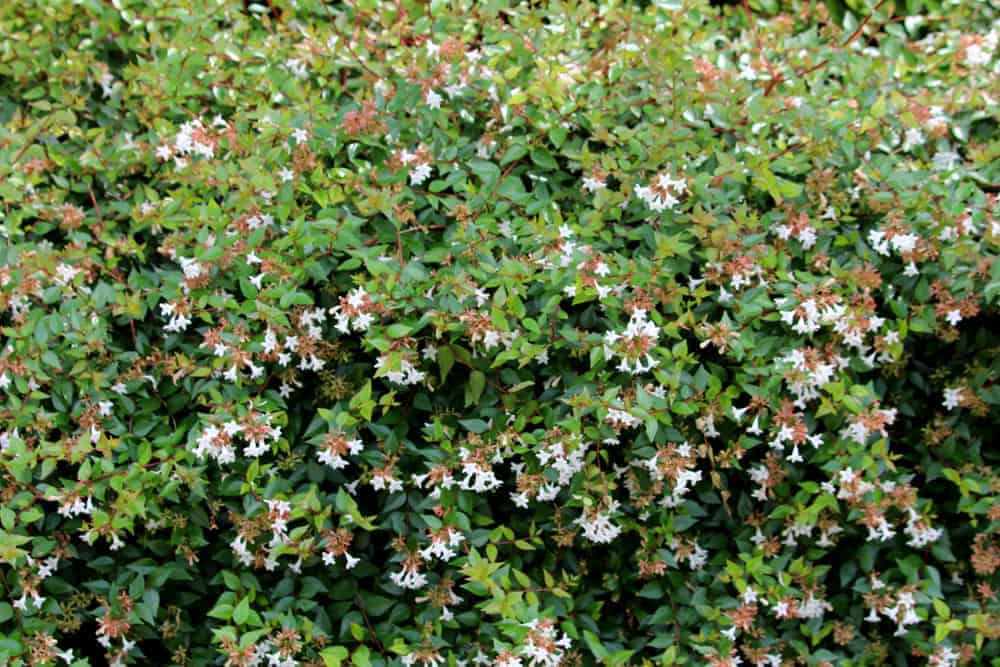As a popular ornamental shrub, abelia brings charm and appeal to many landscapes with its arching branches, pleasant foliage, and abundant blooms. However, abelias are susceptible to the plant-killing disease known as root and stem rot. By understanding what causes this condition and implementing preventative care, you can help your abelia thrive rot-free.
What Causes Root and Stem Rot in Abelia?
Root and stem rot in abelia is caused by various fungal pathogens that thrive in excessively moist environments. Major culprits include phytophthora, rhizoctonia, and fusarium fungi. Spores of these fungi are found naturally in many soils and infect plants under favorable conditions.
Excessive soil moisture or poor drainage provides the wet conditions that allow rot fungi to flourish. Slow suffocation of the root system leads to decay and compromised vascular tissues preventing water and nutrient movement within the plant. Foliage then wilts and plant health rapidly declines.
Recognizing the Symptoms of Rot
Be vigilant for these common signs of rot infection in your abelia
- Wilting, yellowing, or browning leaves that fail to improve with watering
- Plant collapsing or appearing overly limp even when well-hydrated
- Discolored or mushy stems near soil line
- Roots are dark brown or black vs healthy white color
- Foul odor from lower plant areas
- Rapid leaf drop
- White fungal growth on stems or soil
- Sudden plant decline
Catching symptoms early maximizes chances of recovery. Left untended, the rot quickly spreads and leads to irreparable damage and death.
Key Prevention Strategies for Root and Stem Rot
While no plant is 100% immune to rot, utilizing preventative practices greatly reduces susceptibility in your abelia:
-
Plant in well-draining soil: Heavy, moisture-retentive soil is a recipe for disaster. Amend with compost or peat moss to improve drainage.
-
Avoid overwatering: Allow soil to partially dry out between waterings. Too much moisture suffocates roots.
-
Improve airflow: Allow adequate space between plants for air circulation, which reduces humidity levels.
-
Use raised beds: Elevating the root zone improves drainage and oxygenation.
-
Disinfect tools: Clean pruning shears, shovels, etc. between plants to prevent spreading rot fungi.
-
Scout for early symptoms: At the first sign of rot, take action to contain it.
-
Apply preventative fungicides: Use root-targeted, non-toxic products labeled for rot prevention.
With vigilant monitoring and adopting these best practices tailored for abelia, you can maintain a healthy environment to sidestep rot troubles.
Treating and Managing Active Rot Infections
Even with preventative care, abelias can still occasionally fall victim to root or stem rot. Take these steps to rescue infected plants:
-
Quarantine diseased plants to avoid spreading fungi.
-
Prune affected stems and canes back to healthy wood. Sterilize tools between each cut.
-
Uproot the plant and wash off all soil from the roots to inspect for decay. Trim any visibly rotten roots.
-
Replant in fresh soil amended with compost to improve drainage.
-
Apply fungicide drenches according to label directions to treat active infections. Products with active ingredients like Bacillus subtilis work well.
-
Increase spacing between plants to encourage airflow.
-
Monitor soil moisture closely and avoid overwatering while plant recovers.
With aggressive intervention, some mildly affected abelias can be saved. However, severely rotted plants often succumb despite treatment. Prevention is always the best cure!
Frequently Asked Questions About Abelia Rot
If you’re dealing with or trying to avoid rot in your abelia plants, here are helpful answers to common questions:
What causes sudden wilt in abelia?
Sudden, severe wilt can signal root or stem rot. Inspect roots and stems for signs of fungus or decay. Overwatering also leads to wilting.
Can abelias recover from stem rot?
Early stem rot infections can be reversed by pruning damaged canes and treating with fungicides. But advanced rot is often fatal.
What is the black slime on my abelia?
The “slime” is likely fungus! Phytophthora and other rot pathogens produce black ooze. Immediately treat any plants showing this symptom.
Should I replace my rotted abelia?
Severely damaged abelias with widespread rot have poor survival odds. Dig up and discard diseased plants, then start fresh with a new healthy specimen.
Can abelias get root rot indoors?
Yes, abelias grown as houseplants are also susceptible if overwatered and soil drainage is poor. Allow pots to partially dry out between waterings.
Conclusion
While the threat of root rot and other fungi can seem scary, abelias that receive attentive, preventative care can stay healthy and flourish for years. Follow best practices for drainage, watering, and disease prevention. And be ready to act at the first sign of infection. A vigorous, rot-free abelia will reward you with beautiful blooms!

Fine-Tuning Your Watering Routine
Newly planted Abelia craves more water, but mature ones flaunt their drought tolerance. Balance is key—ensure the soil drains well to avoid soggy roots.
Adjust watering with the seasons. Less is more when temperatures drop. In the heat, your Abelia might get thirstier—stay observant.
After watering, do a quick check. If the soil dries out fast, its time for another round. If its a swamp, ease up next time.
Natural and Chemical Defenses
Choosing the right treatment for each pest is crucial. Start with the least invasive methods before resorting to chemicals.
Neem oil and insecticidal soaps can be effective against a range of pests. For tougher cases, targeted chemical pesticides may be necessary.
Apply treatments in the evening to minimize the impact on beneficial insects. Always follow the labels instructions to the letter for safe and effective use.
